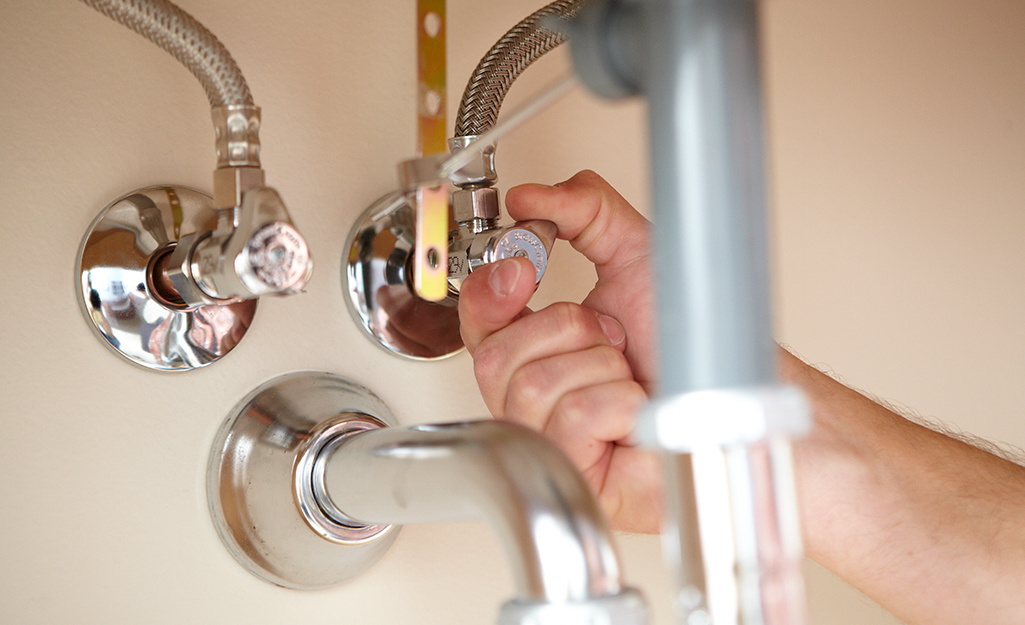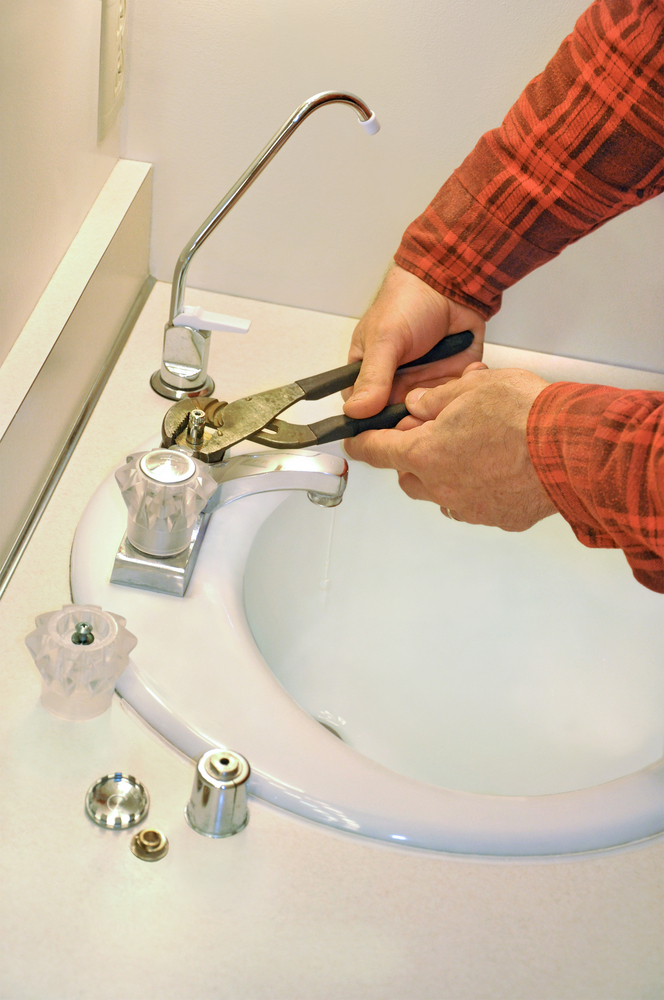The Reasons Behind Fixing a Leaking Faucet
The Reasons Behind Fixing a Leaking Faucet
Blog Article
This post down below pertaining to What Causes Leaky Faucets & How To Fix Them is particularly attention-grabbing. You should keep reading.

Dripping faucets might look like a small inconvenience, but their impact goes beyond just the annoyance of the sound. From wasting water to incurring unnecessary economic prices and wellness threats, overlooking a trickling tap can cause different consequences. In this article, we'll look into why it's critical to resolve this typical household concern immediately and successfully.
Wastage of Water
Ecological Effect
Dripping taps add considerably to water wastage. According to the Epa (EPA), a single tap leaking at one drip per secondly can lose more than 3,000 gallons of water annually. This not only strains water resources but additionally impacts ecosystems and wild animals dependent on them.
Step-by-Step Overview to Fixing a Dripping Faucet
Devices Required
Before trying to fix a leaking tap, collect the necessary tools, consisting of a flexible wrench, screwdrivers, replacement parts (such as washers or cartridges), and plumber's tape.
Usual Tap Issues and Their Solutions
Recognize the type of faucet and the particular problem triggering the drip. Typical troubles consist of damaged washing machines, corroded valve seats, or defective O-rings. Refer to producer instructions or on the internet tutorials for step-by-step guidance on repair work.
Financial Costs
Increased Water Bills
Past the ecological effect, leaking faucets can blow up water costs considerably. The gathered waste in time translates right into higher utility expenditures, which might have been avoided with prompt repair services.
Potential Property Damages
Furthermore, long term leaking can cause damage to components and surfaces bordering the tap. Water build-up can create staining, deterioration, and even structural concerns if left unattended, leading to added repair work prices.
Health Issues
Mold and Mold Growth
The continuous existence of dampness from a dripping faucet produces an excellent environment for mold and mildew growth. These fungi not just endanger interior air quality but additionally posture wellness threats, particularly for people with respiratory problems or allergic reactions.
Waterborne Conditions
Stationary water in trickling taps can end up being a breeding ground for bacteria and other pathogens, raising the threat of waterborne illness. Contaminants such as Legionella bacteria grow in stationary water, potentially leading to significant health problems when ingested or breathed in.
DIY vs. Professional Repair work
Pros and Cons of DIY Repair Work
While some may try to take care of a leaking tap themselves, DIY fixings include their own collection of challenges. Without correct knowledge and devices, DIY attempts can aggravate the issue or cause incomplete repair work, lengthening the problem.
Benefits of Employing a Specialist Plumber
Hiring an expert plumber ensures that the underlying reason for the leaking tap is resolved effectively. Plumbing technicians have the expertise and equipment to diagnose and repair faucet issues efficiently, saving time and minimizing the risk of further damage.
Environmental Responsibility
Specific Payment to Preservation
Taking obligation for repairing dripping faucets straightens with more comprehensive initiatives toward water preservation and ecological sustainability. Every individual's actions collectively make a substantial effect on preserving priceless sources.
Sustainable Living Practices
By focusing on timely repairs and taking on water-saving practices, people contribute to lasting living methods that profit both present and future generations.
Safety nets
Regular Upkeep Tips
To avoid trickling faucets, do routine maintenance such as cleansing aerators, examining for leakages, and changing worn-out parts without delay. Additionally, think about mounting water-saving devices or upgrading to a lot more reliable fixtures.
Value of Prompt Services
Addressing dripping faucets as soon as they're observed protects against more water wastefulness and potential damage, ultimately saving both water and money in the long run.
Impact on Home Value
Understanding of Well-Maintained Home
Preserving a residential or commercial property in good condition, including addressing upkeep problems like dripping taps, boosts its viewed value and worth among potential customers or occupants.
Influence on Resale Worth
Qualities with well-kept plumbing components, including taps, command higher resale worths in the realty market. Addressing leaking taps can contribute to a favorable impression throughout property examinations and arrangements.
Final thought
Attending to a leaking faucet exceeds mere benefit; it's a vital step towards conserving water, decreasing monetary costs, and safeguarding health and wellness and building. Whether through DIY repair services or specialist aid, taking action to repair leaking faucets is a small yet impactful way to promote responsible stewardship of resources and contribute to a healthier, more lasting future.
How to Fix a Dripping or Leaky Faucet
A leaking faucet is one of the most common problems that homeowners encounter, but it being commonplace doesn’t make it any less annoying. The constant drip drip drip of a leaking bathtub faucet, showerhead, or sink tap can disturb your home’s serenity. Left neglected, a dripping faucet can also result in higher water bills and discoloration or mold growth in your sink or plumbing fixtures.
Fortunately, you don’t have to be a trained plumber to know how to stop a dripping faucet. With some basic tools, replacement parts, and a little patience, leaky faucet repair is a breeze. In this article, we’ll explain what causes dripping faucets and how you can fix them.
What Causes a Leaking Faucet?
Kitchen and bathroom faucets come in all manner of designs, but most involve some combination of valves, O-rings, seals, and washers. The O-ring is usually the weakest link, but any one of these pieces can wear down over time. Heat, moisture, temperature fluctuations, minerals, mold, and movement can contribute to warping and corrosion, breaking the watertight seal. This just comes with the territory of being a homeowner. Everything is always subject to wear and tear, and some component parts of your appliances and fixtures need to be replaced on occasion. At least replacement O-rings are cheap!
More rarely, dripping faucets can be a symptom of excessively high water pressure. Were this the case in your home, you would probably notice that the leak is not isolated to one faucet. Water pressure issues are harder to resolve on your own. We recommend contacting a professional plumber if you suspect your water pressure is too high.
How to Fix a Dripping Faucet
Pipe wrench or monkey wrench Allen wrench set Screwdrivers Old towel or rag Shut off the water.
Before you do anything, you need to turn off the water to keep from drenching your kitchen or bathroom. You should find a valve under the sink and against the wall. Once you’ve turned this valve, try turning the faucet on to confirm that the water source has been cut off.
If you can’t locate your local valve for the faucet you’re working on, you can always shut off the water to the house at the main valve. Of course, this will prohibit anyone from using the sinks, showers, or toilets while you’re working on the faucet that’s giving you trouble.
Plug or block the drain.
You’ll be disassembling the faucet and removing some small bits of hardware. Plug the drain with a stopper or rag to avoid the possibility of a small screw falling into your P-trap.
Take apart the faucet assembly.
There are several varieties of kitchen and bathroom faucets, each with its own manner of assembly. For detailed instructions on how to disassemble your faucet, you can refer to the fixture’s manual or contact the manufacturer. If you know whether you have a ball, disc, cartridge, or compression faucet, you can find detailed schematics online.
In general, you need to begin by removing the faucet handles. You might notice a small screw that you’ll need to remove with a screwdriver or Allen wrench. If you don’t see any visible securing hardware, it’s likely hidden under a decorative cap that can be unscrewed or popped off with flathead screwdriver.
Remove each piece methodically, consulting a schematic when necessary. Take notes or arrange the pieces in such a way to make it easier to correctly reassemble the faucet later.
Remove the cartridge.
Once you’ve removed the handles and securing hardware, you should be able to remove the valve cartridge or stem. Some cartridges will slide right out. Other faucet models will require you to loosen a nut with a pipe wrench before you can remove the valve stem.
Examine the exposed hardware.
With the cartridge or stem removed, inspect the component parts. Check the rubber O-rings for wear and tear. Also examine the seat washer for corrosion or other damage. These pieces are usually the responsible parties for a dripping faucet, but it’s worth inspecting the other component parts while you have the faucet disassembled.
Find replacement parts.
Once you’ve identified which faucet component has failed, find an identical replacement. Your local hardware store should have O-rings, seat washers, and other standard components in stock. If you have a luxury or uncommon faucet, you may have to contact the manufacturer for a replacement part.
It’s a good idea to take your old parts with you to the hardware store so you can compare them with the store’s inventory and be sure you’re purchasing the correct replacement.
Reassemble the faucet.
With your new parts in hand, reconstruct the faucet and handles. Don’t be tempted to overtighten screws or nuts. You might think this could create a better seal, but it can instead damage or bend a delicate part of the assembly and create a new problem for you.
Turn on the water and test the faucet.
The only thing left to do is test your work. Unplug the sink, turn the water back on, and try the faucet. Congratulate yourself on a job well done!
https://www.libertyhomeguard.com/how-to-fix-a-dripping-or-leaky-faucet/

Do you enjoy more info about 4 Common Reasons for a Leaky Faucet? Give a remark down the page. We will be glad to listen to your thoughts about this post. We hope that you come back again in the near future. Loved our piece of writing? Please quickly share it. Let another person discover it. I appreciate your readership.
Report this page